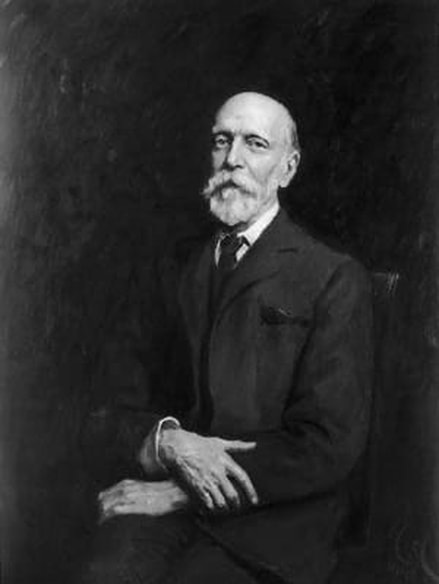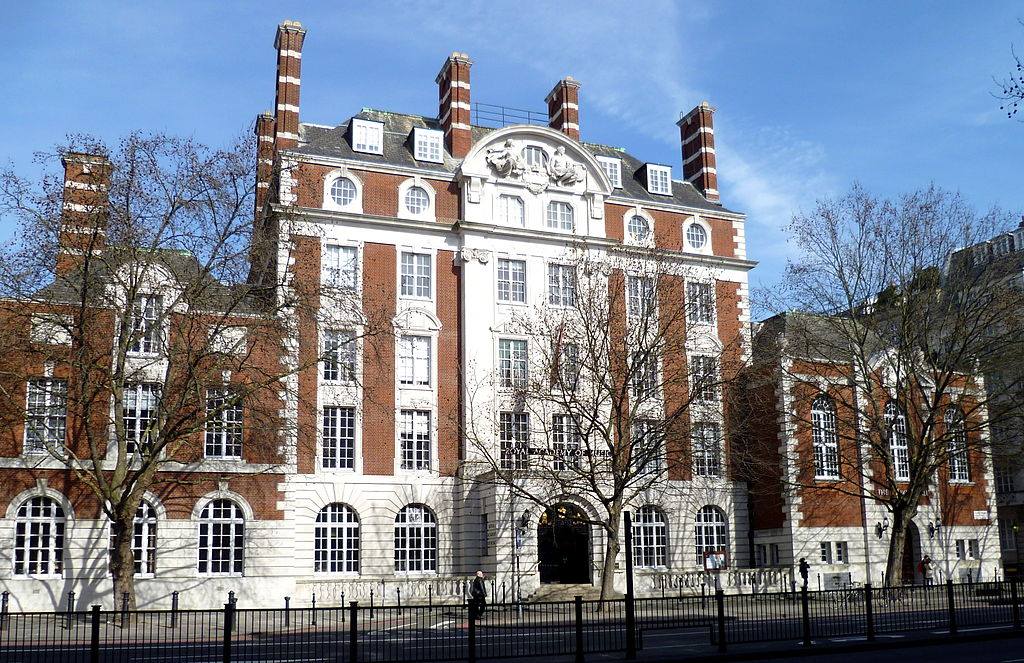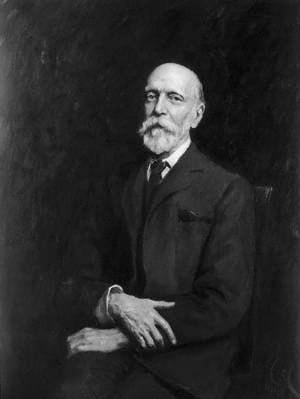Sir Ernest George RA (13 Jun 1839–1922) was an English architect, landscape and architectural watercolour painter, and etcher.
He was born at 9 Portland Place, Southwark, London, on 13 June 1839, the second of three sons of John George (1806–1886), ironmonger, and Mary Elizabeth (b. 1811), daughter of William Higgs, a wholesale ironmonger of Streatham. John George, in Ernest's words 'a man of Kent', had entered partnership with Higgs about 1840, and in 1851 moved with his family into an old house adjoining the warehouse and yard at 179 Borough High Street, Southwark. In 1854 the family moved to 36 Albert Square, Kennington
He lived at "Redroofs" in Rycroft Road, Streatham with his Sister Mary and daughters Margaret and Cecily. In 1871 and 1881 the family lived at Grecian Cottages, Crown Hill.
(Source England, Wales and Scotland census).
George lived at Redroofs (Image 2) until 1903, selling Redroofs to Edmund Frederick Tattersell. It was destroyed c1912
Braddell recalls..."I remember very well the lovely farewell party that Ernest George gave at the house before he left Streatham...I can remember with horror at his giving up living in so delightful a place of his own making.....for life in what I considered when I first saw it, a commonplace Victorian barrack fit only for a rich City Merchant..."
A nationally renowned architect, with a variety of styles, and working with a succession of partners, Thomas Vaughan, Harold Peto and finally Alfred Yeates. He served as president of the Royal Institute of British Architects from 1908 to 1910.
Ernest George's London office was nicknamed "The Eton of architects", and the 79 pupils included Herbert Baker, Guy Dawber, John Bradshaw Gass, Edwin Lutyens and Ethel Charles. Ethel Charles was the first woman to be elected a member of the Royal Institute of British Architects.
George's last partner (from the time of Peto's retirement in 1892) was Alfred Bowman Yeates: the firm designed several fine country houses as well as Southwark Bridge, the Royal Academy of Music (Image 4), and the Lombardic-Romanesque Golders Green Crematorium (Image 5) where, fittingly, he was taken after he died in 1922 at the age of 83.
His other work includes the interior of Claridges Hotel, and the Royal Exchange buildings.
George was also involved in designs in Streatham and SW London- Hambly mansions, Coffee Tavern at Streatham Common, the Church Hall in Guildersfield Road and Henry Tate's mausoleum at West Norwood Cemetery
He is also well known as an artist, mainly of street scenes in towns and cities across Europe. (Image 3 below - 1886 Watercolour of Fleet Street).
(Sources THE May 2011 and Hilary Joyce Grainger Ph.D thesis )






